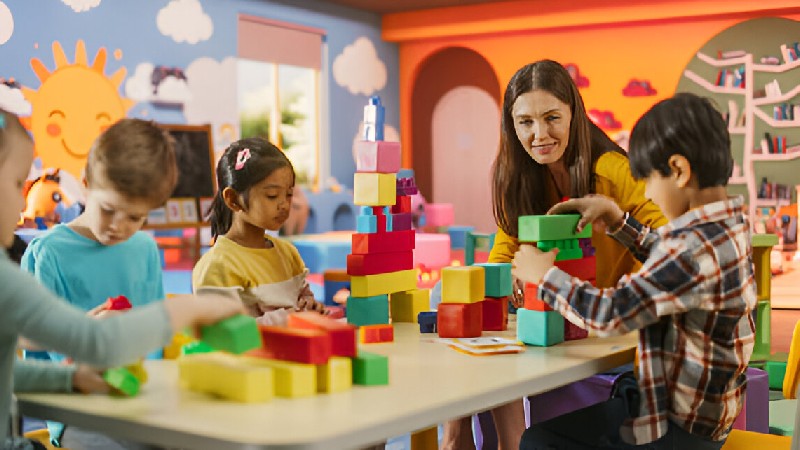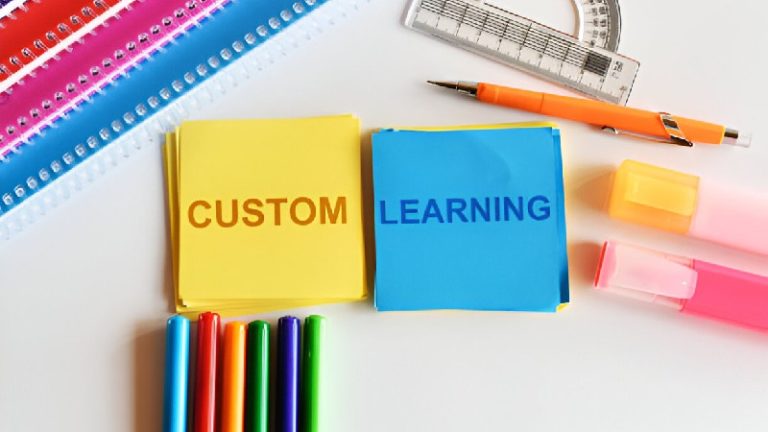The traditional classroom often relies on passive learning, where information is absorbed and regurgitated. But what if education could tap into the brain’s innate drive for challenge and reward? This is where gamification in education steps in, offering a revolutionary approach that leverages game mechanics to stimulate neuroplasticity and enhance learning outcomes.
The specific game elements, like narrative-driven quests and immediate feedback loops, trigger the release of dopamine, the brain’s “motivation molecule,” and this fosters a more receptive learning environment. Moreover, real-world applications of gamification in education that go beyond surface-level engagement, focusing on how it can foster critical thinking, problem-solving, and long-term knowledge retention.
Rewiring the Brain for Success
Traditional education often overlooks the brain’s natural learning mechanisms. Neuroplasticity, the brain’s ability to reorganize itself by forming new neural connections, is crucial for learning. Gamification in education can stimulate this process by creating engaging and rewarding learning experiences.
This isn’t just theory; studies show that game-like environments can increase the release of dopamine, a neurotransmitter associated with pleasure, motivation, and learning. When students are engaged and rewarded, their brains are more receptive to new information, and they are more likely to retain it.
For example, imagine a language learning app that presents vocabulary as a series of mini-quests, where each successful completion unlocks a new part of a story. This narrative-driven approach, combined with immediate feedback and visual rewards, triggers the release of dopamine, making the learning process more enjoyable and effective.
The brain forms stronger neural connections associated with the new vocabulary, leading to better retention. This approach stands in stark contrast to rote memorization, which often fails to engage the brain’s reward system.
Feedback Loops and Dopamine
A core element of effective gamification is the implementation of rapid and informative feedback loops. These loops provide immediate reinforcement, telling students where they succeeded and where they need to improve. This constant feedback triggers dopamine release, motivating students to keep trying and learn from their mistakes.
- Immediate Reinforcement: Instant feedback after each task creates a sense of accomplishment and encourages further engagement.
- Adaptive Challenges: Gamified systems can adjust the difficulty of tasks based on student performance, providing a continuous challenge that keeps them motivated.
- Visual Progress: Progress bars, leaderboards, and other visual cues provide a sense of achievement and encourage continued effort.
These elements create a powerful learning cycle, where students are motivated to engage, learn, and improve.
Implementing Deep Gamification in Education

True gamification in education goes beyond superficial rewards. It involves integrating game mechanics into the core learning experience, creating immersive and engaging environments that foster deep learning.
- Narrative-Driven Learning: Creating compelling stories and quests that connect learning objectives to a larger context can increase student engagement and motivation.
- Simulation and Role-Playing: Using simulations and role-playing scenarios allows students to apply their knowledge in real-world contexts, enhancing critical thinking and problem-solving skills.
- Collaborative Learning: Incorporating team-based challenges and collaborative tasks fosters social interaction and peer learning.
For instance, a history lesson could be transformed into a simulation where students take on the roles of historical figures, making decisions that impact the course of events. This immersive experience not only makes learning more engaging but also helps students understand the complexities of historical events and develop critical thinking skills.
Gamification Elements and Their Neurological Impact
| Gamification Element | Neurological Impact | Learning Benefit |
| Immediate Feedback | Dopamine release, increased neural activity | Enhanced motivation, faster learning, improved retention |
| Narrative-Driven Quests | Increased engagement, emotional connection | Deeper understanding, increased interest, improved recall |
| Simulation and Role-Playing | Application of knowledge, active problem-solving | Critical thinking, enhanced retention, practical skills development |
| Collaborative Challenges | Social interaction, peer learning | Improved communication, teamwork, diverse perspectives |
Transforming Education with Gamification
The potential of gamification in education is being realized in various educational settings.
- Medical Training: Surgical simulations using gamified elements help medical students develop procedural skills and improve decision-making under pressure.
- Language Learning: Apps using game-like challenges and rewards help students learn new languages more effectively and retain vocabulary better.
- STEM Education: Gamified coding platforms and science simulations engage students in complex subjects, fostering critical thinking and problem-solving skills.
For example, a medical training simulation might involve students performing virtual surgeries, with points awarded for accuracy and speed. The simulation provides immediate feedback, allowing students to learn from their mistakes and improve their skills. This approach not only makes training more engaging but also helps students develop the skills they need to succeed in real-world scenarios.
Conclusion
Gamification in education is more than just a passing trend; it’s a powerful tool for unlocking the brain’s natural learning potential. By leveraging game mechanics to stimulate neuroplasticity and create engaging learning experiences, educators can transform classrooms into dynamic environments where students are motivated to learn and succeed. As we continue to explore the neuroscience behind gamified learning, we can develop innovative strategies that make education more effective, enjoyable, and deeply ingrained.
F.A.Q.s
Q: What is the core concept of gamification in education as discussed in this article?
A: It’s about using game mechanics to stimulate neuroplasticity, enhancing learning by engaging the brain’s reward system and creating immersive experiences.
Q: How does gamification stimulate neuroplasticity?
A: Gamified learning environments can increase dopamine release, which strengthens neural connections and makes the brain more receptive to new information.
Q: What is the role of feedback loops in gamified learning?
A: Feedback loops provide immediate reinforcement, triggering dopamine release and motivating students to learn from their mistakes and improve.
Q: How does gamification go beyond simple rewards like points and badges?
A: It involves integrating game mechanics into the core learning experience, such as narrative-driven quests, simulations, and collaborative challenges.
Q: Can you provide real-world examples of gamification in education?
A: Examples include surgical simulations in medical training, language learning apps with game-like challenges, and gamified coding platforms in STEM education.
Q: How does narrative-driven learning enhance engagement?
A: By connecting learning objectives to a compelling story, it increases student engagement and creates an emotional connection to the material.
Q: What are the benefits of using simulations and role-playing in education?
A: They allow students to apply their knowledge in real-world contexts, enhancing critical thinking, problem-solving skills, and knowledge retention.
Q: How does collaborative learning fit into gamification?
A: Team-based challenges and collaborative tasks foster social interaction and peer learning, improving communication and teamwork skills.
Q: What is the neurological impact of immediate feedback in gamified learning?
A: It leads to dopamine release and increased neural activity, enhancing motivation, learning speed, and knowledge retention.
Q: How can gamification help with long term knowledge retention?
A: By making the learning proscess more engaging, and by stimulating the brains reward system, the brain is more likely to create stronger neural pathways related to the information being learned.


